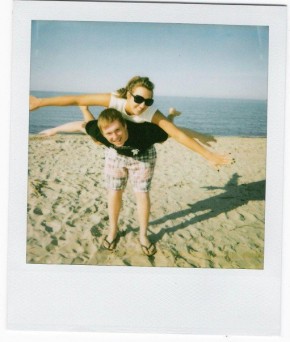Picking your platform: social edition
 I lived with one of my best friends my senior year of college who exposed me to many firsts, most of them Web 2.0 related. Referred to as “THE Internet” by our outer circle, he opened my eyes to the world we commonly refer to as social networking. He convinced me to join Twitter before it became what it is today, forced me into blogging on Tumblr before I saw the value in it and even pushed me to try Foursquare — one of the most popular location-based apps, which has undoubtedly consumed a plethora of joyous and un-productive hours of my life (as well as earned me dirty looks from my friends at the brunch table.)
I lived with one of my best friends my senior year of college who exposed me to many firsts, most of them Web 2.0 related. Referred to as “THE Internet” by our outer circle, he opened my eyes to the world we commonly refer to as social networking. He convinced me to join Twitter before it became what it is today, forced me into blogging on Tumblr before I saw the value in it and even pushed me to try Foursquare — one of the most popular location-based apps, which has undoubtedly consumed a plethora of joyous and un-productive hours of my life (as well as earned me dirty looks from my friends at the brunch table.)
Today, I would shamelessly diagnose myself an addict, a user of well over 30+ networks. I blame said roommate for my obsession, but also have to give him credit for teaching me some valuable things about picking and choosing the networks that will bring the most value to an individual and/or a business.
Don’t assume that a popular network means success for you or your business. Just because a particular site has the most users or is deemed as the new “it”, doesn’t mean your business will benefit from using it. Research is essential before jumping on to any platform, established or not. An individual has the freedom to test and try things more freely, but a business really needs to evaluate what audience they are trying to reach and how other businesses alike are using that platform. Certain social networks can provide a useful outlet to interact with your audience while others won’t present any benefit at all. Pinterest, for example, works well for retailers and advertising focused industries because of its visual business model. Retailer’s can pin their products, which will then drive traffic back to their own site. Although fast growing and currently the talk of the social universe, it won’t provide much to a non-visual industry.
Get organized before you get started. Devising a social media strategy for your business is key; whether you create said strategy yourself or hire a qualified firm to help you, this should be your first step. Deciding on your audience reach, where they are, your end goal, deployment schedules and how the network will be maintained are all part of staying organized and using a social network effectively. A consistent plan that’s universal throughout your organization will help maintain your new presence on your chosen platform and keep everyone on the same page internally with the same goal in mind. If you start off using Twitter, decide how often tweets will go out, what the content will include, who the tweets will be geared toward, how you want to be represented, who are your competitors, etc.
Do one thing really well rather than multiple things haphazardly. It’s a common misconception that you need to be on everything in order to be considered a thought leader or, my least favorite term, an “influencer.” People create user accounts on multiple social networks, some collecting dust. Not good. Become a pro at one platform first. Learn the user capabilities and how far you can stretch them, track your progress and audience influence, see what they respond to most and test new ideas to prove their stickiness. If you have decided that your audience is on Facebook, learn the etiquette of the platform. When do people usually post and how often, what are the things your audience seems to react to best and how can you provide that. Learn how to set up tabs, understand the layout (whether it be timeline or the next update). Your network will be a breeze to maintain once mastered, which will then leave room to consider joining another down the road.
All social networking is trial and error, but having a plan before you start a new account will benefit you and your business. Who knew that the guy who purchased my first mullet wig, explained to me the binary numeral system and pushed me to get a web domain would have jump-started my career in social. I should probably go tweet him a thank you.